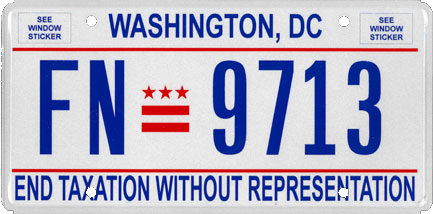
“Architecture for Statehood,” Preston Scott Cohen’s recent studio, tackles the timely question of what statehood would mean for Washington, DC, one of the most elegantly designed cities in the United States. Conceived in 1791 by Pierre Charles L’Enfant, a French-American military engineer, the urban plan for what was to be the new federal city positions the symbolic buildings of national power—including the White House and Capitol building—within a central core, with boulevards radiating out diagonally toward the fringes.
But while Washington is the seat of the country’s government—and a symbol of democracy throughout the world—its own people are denied one of their most basic democratic rights. The Constitution of the United States grants that each state has voting representation in both houses of Congress. But as the District of Columbia is not a state, there is no representation in Congress for its more than 700,000 citizens.
It’s a matter of justice. Washington must become a state. The slogan on DC’s license plate is indisputably accurate: ‘Taxation without Representation.’ It’s unconstitutional. It’s authoritarian. It’s undemocratic. This kind of design query and investigation is absolutely necessary.
The implications of this are substantial. And it begs some fundamental questions—sociopolitical, geographical, and architectural. “It raises so many consequential questions. This is my favorite studio hypothesis, ever. This is because of the way it intersects the urban, the architectural and the symbolic questions,” says Cohen. “The significance and importance of having it become a state is so palpable, so necessary. It’s a matter of justice. Washington must become a state. The slogan on DC’s license plate is indisputably accurate: ‘Taxation without Representation.’ It’s unconstitutional. It’s authoritarian. It’s undemocratic. This kind of design query and investigation is absolutely necessary. And the students are responding to it in very different ways.”
If Washington were to become a state, the introduction of new governing institutions and agencies that states require would bring about potentially dramatic changes to the city and the federal district, both spatially and symbolically. As a city-state, the renamed Washington, Douglass Commonwealth (in honor of Frederick Douglass) would be the seat of three systems of governance: city, state, and federal—which would, in turn, be multiplied threefold across the three branches: executive, legislative, and judicial.
The question that Cohen poses is how could this be articulated, architecturally. Currently, the L’Enfant plan places an overwhelming emphasis on the symbols of federal power. “What’s different about Washington is that it does not have a state government,” Cohen explains. “State governments have numerous institutions: departmental administrative buildings, archives, departments that deal with taxation, childcare, the elderly, and of course, the main governing bodies—the state courts, the capitol, and the executive branch and residence.’
But in Washington DC, the federal buildings, naturally, dominate. “This would have to be contested if the district were to gain statehood. For a start, there would need to be a basic re-weighting and reemphasis of official buildings—and the cityscape itself to some degree—in order to address this imbalance,” explains Cohen. “We envision these ideas because we’re interested in the implications as architects.” One potential solution is to imagine the new city-state as a cluster of mini cities—divided either by the four existing quadrants or by wards, reflecting how schools are governed locally. These, in turn, would each have their own, more robust, local governments, similar to those of the various counties or cities in the other states.
But this doesn’t solve the glaring architectural issue here: the fact that the city’s geographic center is also its symbolic center—and it is filled with federal buildings. “The new state will be a doughnut. The constitution for the new state (that has been voted on but not, of course, officially instituted) calls for carving out the iconic center of Washington as a strictly federal district inclusive only of the Mall and the main buildings of the federal government. Some of the federal government buildings will not be in this area, of course, ” Cohen says. “So this new state will have numerous federal buildings in it, but on state land. They will be leased by the state and taxed by the state, etc. So the overlay of state and federal will be very much like it is in other states where federal buildings populate states. Though we will still have a purely federal district, no one will hold residency there.”
How can Washington evolve into a place of its own, with its own state identity—one that isn’t subordinate to its beautifully designed federal core? The students are weighing several options, using specially created 3D digital modeling of the city that allows them to envisage overlays and interventions on the existing infrastructure. “You can quite literally undo the L’Enfant plan, subvert the hierarchies, you can interrupt L’Enfant’s diagonals—and some people are looking into that. If you want to break those diagonals, you’d have to tunnel or divert circulation—and that’s an interesting problem,” says Cohen.
“One idea is to adopt the ring of historic forts that sit on the periphery of the city—built to defend the Union during the Civil War—as symbols of state autonomy. We looked very intensely at many parts of the city. We’ve analyzed and interpreted its architecture extensively. I wanted to adopt the language of the urban fabric as a source for building new state institutional buildings. Not to always adopt strategies that are monumental, but rather to deploy anti-monumental strategies.”
Cohen emphasizes how important questions of social justice are for his students, and how statehood is fundamental to this. “The making of the state is to change DC, to have it not merely be what it is today—a city completely determined and governed by the federal government, without democratic representation. It’s really exciting to be dealing with a matter of social justice that’s so indisputably significant.”